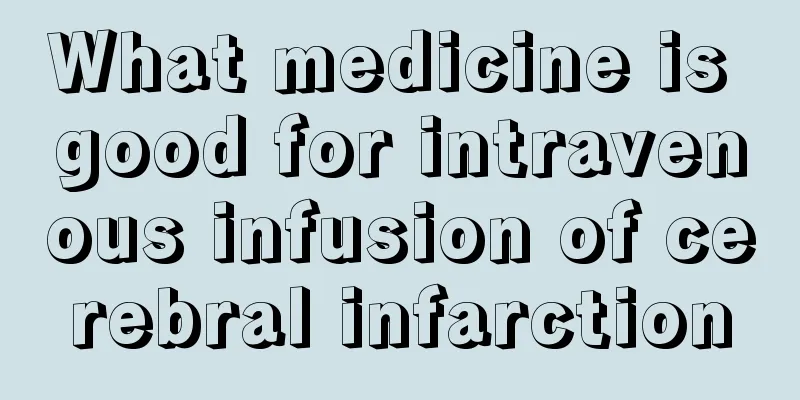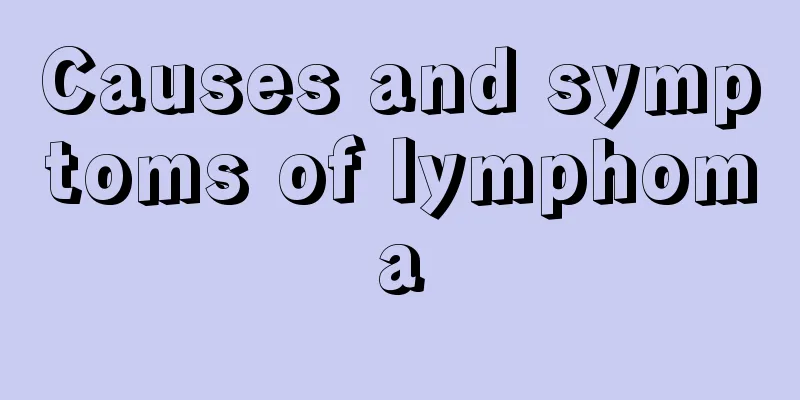What medicine is good for intravenous infusion of cerebral infarction

|
Patients with cerebral infarction need to follow the doctor's advice on the use of intravenous medication. We can also learn about the medicinal effects of intravenous medication for cerebral infarction. We must maintain an optimistic attitude and stable emotions in normal times to prevent the occurrence of cerebral infarction. Patients with cerebral infarction generally use urokinase and streptokinase to dissolve blood clots, and many drugs are used in the treatment process. It is recommended that everyone learn about it. Cerebral infarction is a cerebrovascular disease caused by cerebral atherosclerosis, which causes damage to the vascular endothelium and narrowing of the cerebral artery lumen. Subsequently, due to various factors, local thrombosis occurs, which aggravates the arterial stenosis or completely blocks it, leading to ischemia, hypoxia, and necrosis of brain tissue, causing neurological dysfunction. The main factors of cerebral infarction are: hypertension, coronary heart disease, diabetes, overweight, hyperlipidemia, and preference for fatty meat. Many patients have a family history. It is more common in middle-aged and elderly people aged 45 to 70. (I) Premonitory symptoms of cerebral infarction Patients with cerebral infarction often develop the disease when they are resting quietly. Some patients wake up and find that their mouth and eyes are crooked, they are hemiplegic, they are drooling, they drop rice grains when they eat, and they cannot lift their chopsticks. This is a cerebral infarction, which often catches people off guard. Only some patients have symptoms of transient cerebral ischemia before the onset of the disease, such as limb numbness, slurred speech, transient blacking out, dizziness or vertigo, nausea, and blood pressure fluctuations (which may be high or low). These precursor symptoms are generally mild, short-lived, and often ignored. (II) Clinical manifestations of cerebral infarction: The location and area of infarction vary. The most common manifestations are as follows: (1) Onset is sudden, often during rest or sleep. The onset reaches its peak within a few hours or 1 to 2 days. (2) Headache, dizziness, tinnitus, hemiplegia, which may affect a single limb or one side of the body. The upper limbs may be heavier than the lower limbs or vice versa. There may also be difficulties in swallowing, slurred speech, nausea, vomiting, etc. In severe cases, the patient quickly falls into a coma. Each patient may have several of the above clinical manifestations. (3) The significance of brain CT examination: Brain CT examination can show the size and location of cerebral infarction lesions with an accuracy rate of 66.5% to 89.2%, and the accuracy rate of early cerebral hemorrhage is 100%. Therefore, early CT examinations can help in differential diagnosis and exclude lesions such as cerebral hemorrhage. This is very important. The treatment of cerebral hemorrhage and cerebral thrombosis in the early stages of the disease are completely different. When cerebral infarction occurs within 24 hours, or the infarct focus is smaller than 8 mm, or the lesion is in the brainstem and cerebellum, brain CT examination often cannot provide a correct diagnosis. If necessary, follow-up examination should be performed within a short period of time to avoid delaying treatment. (4) There is a disease called "lacunar infarction". Patients may be asymptomatic or have mild symptoms. The disease may be discovered during a brain CT scan due to other diseases, and some of the lesions may be old. This situation is more common in the elderly, and patients often have chronic diseases such as hypertension, arteriosclerosis, hyperlipidemia, coronary heart disease, and diabetes. Lacunar infarction can recur, and some patients eventually develop symptomatic cerebral infarction, while others remain in a stable condition for many years. Therefore, we should pay attention to "silent stroke" in the elderly and take a positive attitude towards prevention. (III) Rescue measures for cerebral infarction: Cerebral infarction should be treated as early as possible. Although it is not as dangerous as cerebral hemorrhage, most patients are elderly and weak, suffering from many chronic diseases, and there are many cases of cautious use of medication in treatment. In addition, the infarction area can expand in a short period of time, and many complications may occur. Therefore, the mortality rate of cerebral infarction is relatively high, and the disability rate is higher than cerebral hemorrhage. The treatment principles are mainly to improve cerebral circulation, prevent and treat cerebral edema, and treat complications. 1 Appropriate activities can improve cerebral circulation, but those who are unconscious should rest in bed and receive intensive care. 2. Improve cerebral blood circulation, increase cerebral blood flow, and promote the establishment of collateral circulation in an attempt to reduce the area of infarction. Low molecular weight dextran, 706 generation plasma, Vinorutong, compound danshen injection, ligustrazine and other drugs are used, 1 to 2 times a day, intravenous drip volume of 250 to 500 ml, for 7 to 10 days. For those with headache, nausea, vomiting or impaired consciousness, 20% mannitol dehydration treatment can be used, twice a day, 250 ml each time. 3. Urokinase and streptokinase are commonly used in thrombolytic therapy to dissolve blood clots. Add 20,000 to 50,000 units of domestic urokinase to 0.56 mol/L 10% glucose solution and drip intravenously once a day for 10 days per course of treatment. Some people also use carotid artery administration of urokinase to treat cerebral infarction, which is usually used within 24 hours of onset. However, since it is difficult to inject the drug through carotid artery puncture, it must be used in a hospital. The reason why thrombolytic therapy should be applied early is that within the first day of thrombus formation, it is rich in water and easy to dissolve. This way, the effect is quick and the treatment course is short. However, the condition should be closely monitored to avoid serious consequences such as cerebral hemorrhage. 4 Practice has proven that hyperbaric oxygen therapy is very effective in treating cerebral infarction and can greatly reduce the disability rate of cerebral infarction. It is suitable for early application, once a day, 10 times as a course of treatment, each oxygen inhalation time is 90 to 110 minutes. It must be performed in a closed pressurized cabin and is subject to limited conditions. 5. The purpose of regulating blood pressure, controlling high blood lipids and high blood sugar is to control the risk factors for the disease. However, if the blood pressure is too high, do not lower it too quickly; if the blood pressure is too low, raise it appropriately. Patients with cerebral infarction often have high blood sugar, which is not conducive to treatment and must be actively controlled. 6. For comatose patients, pay attention to keeping the airway open, suction sputum in time, turn over and pat the back, move the limbs, and prevent pneumonia and bedsores. |
<<: Moxibustion for rheumatoid arthritis of the knee
>>: How long is the recovery period of cerebral infarction
Recommend
Jaw pain and dizziness
If one part of a person's body is uncomfortab...
How to store carrots
Correct food storage methods can extend the life ...
Analyzing the symptoms of hamartoma
Hamartoma is a tumor disease that is very harmful...
Can the pacifier be scalded with boiling water?
Pacifiers are a tool that many babies will use. T...
Which part is the talus
The talus is a bone that many friends do not know...
What are the methods of TCM to treat colorectal cancer
Because modern people have high work pressure and...
What are the hydrating sleeping masks
Facial masks are a must-have item for modern wome...
Is it good to exercise every day if you have gallbladder cancer?
Is it good to exercise every day if you have gall...
Introduction to several more serious symptoms of lung cancer
As the tumor continues to grow, the symptoms of l...
How can men prevent prostate cancer? Introduction to preventive measures for prostate cancer
Due to the development of today's society, ma...
How to store yellow peaches, how to preserve fresh yellow peaches
The fresher the fruit, the more delicious it is a...
What is the cause of dull pain on the right side of the lower abdomen
There is a dull pain on the right side of the low...
The difference between the cecum and the appendix is like this
Recently, many people have found that when they g...
How to increase the alcohol detoxification enzyme in the body
The human body is rich in biological enzymes, one...
What are the benefits of taking a bath with white vinegar?
People can add a lot of ingredients when taking a...









